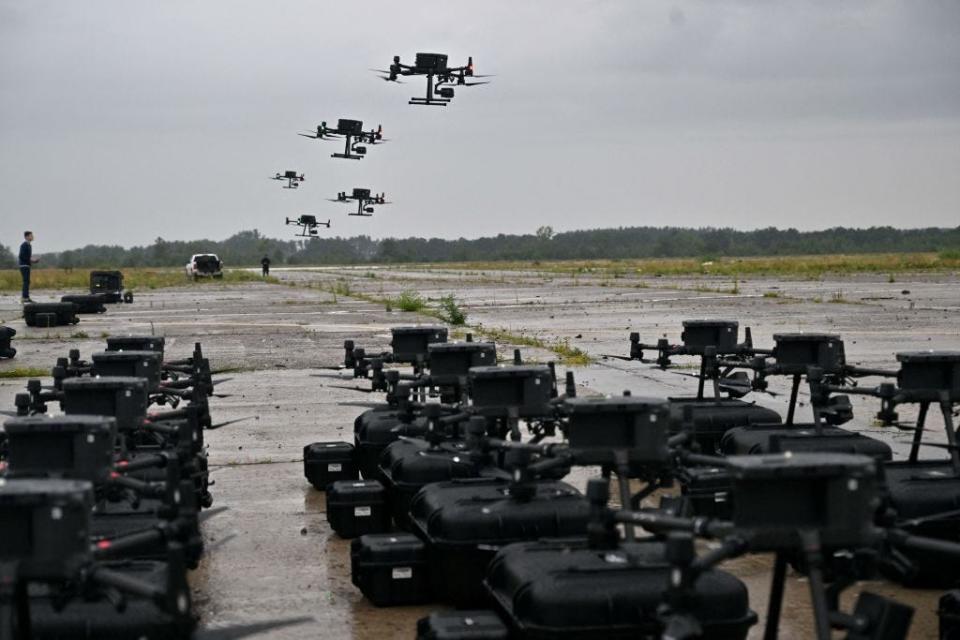The US military has a plan to turn the Taiwan Strait into an 'unmanned hellscape' if China invades, top admiral says
The US has plans to employ thousands of drones if China invades Taiwan, the top US admiral in the Pacific said.
The "unmanned hellscape" would buy the US time to come to the aid of Taiwan, he added.
China's drills around the island last month raised questions about what a blockade or invasion would look like.
If China invades Taiwan, it may face a large, lethal drone force meant to make its military "miserable."
At least that's the plan, according to the top US admiral in the Pacific, who said the "Hellscape" strategy is designed to distract China and buy the US time to respond.
"I want to turn the Taiwan Strait into an unmanned hellscape using a number of classified capabilities," Adm. Samuel Paparo, the commander of US Indo-Pacific Command, told The Washington Post at the International Institute for Strategic Studies' Shangri-La Dialogue Summit.
In doing so, he said, "I can make their lives utterly miserable for a month, which buys me the time for the rest of everything."
The plan involves launching thousands of unmanned systems, from surface vessels and submarines to aerial drones, to fight Chinese invading forces as soon as they begin to cross the Taiwan Strait, effectively acting as a kind of first line of defense.
This type of strategy would require heavy investments in cheap, reliable drones, which the US has been doing with its Replicator initiative. Last year, the Department of Defense officially announced the program, which is a long-term plan to field thousands of autonomous systems.

While progress on the ambitious plan has been relatively quiet, there have been some signs of movement.
Back in March, Deputy Defense Secretary Kathleen Hicks said the Pentagon aims to spend $1 billion this fiscal year on Replicator. A few capabilities have been highlighted as necessary for the first drones in the program, and the Pentagon is working with defense partners to develop and acquire these systems.
Last summer, Hicks said Replicator aimed to counter China's "biggest advantage," which is its mass: "More ships. More missiles. More people." She said that "we'll counter the [People's Liberation Army's] mass with mass of our own, but ours will be harder to plan for, harder to hit, harder to beat."
The previous INDOPACOM commander said last year that US unmanned capabilities "will be an asymmetric advantage." He said "operational concepts that we are working through are going to help amplify our advantages in this theater," adding, "There's a term, hellscape, that we use."
Paparo's remarks on the "Hellscape" strategy come on the heels of a massive Chinese military drill around Taiwan, during which it effectively surrounded the island and showed off joint force capabilities.
While the exercise showed Taiwan and the US how quickly and easily China could employ a blockade, it was also a learning opportunity for the US military.
After the drills concluded, Paparo said they "looked like a rehearsal" for an invasion, telling Japan's Nikkei newspaper: "We watched it. We took note. We learned from it. And they helped us prepare for the future."
Read the original article on Business Insider


